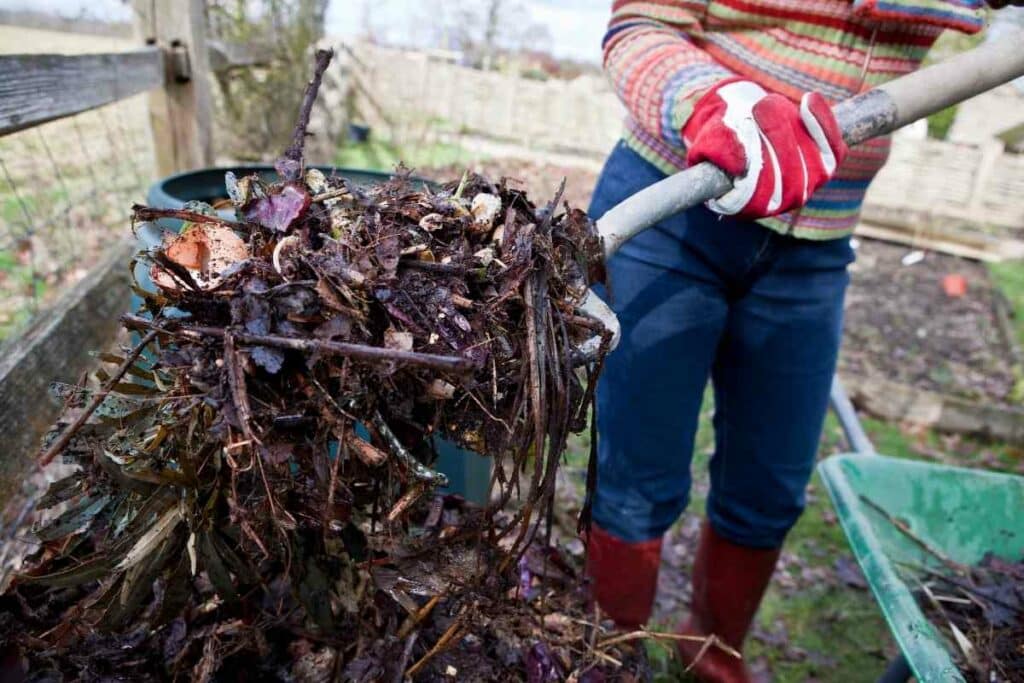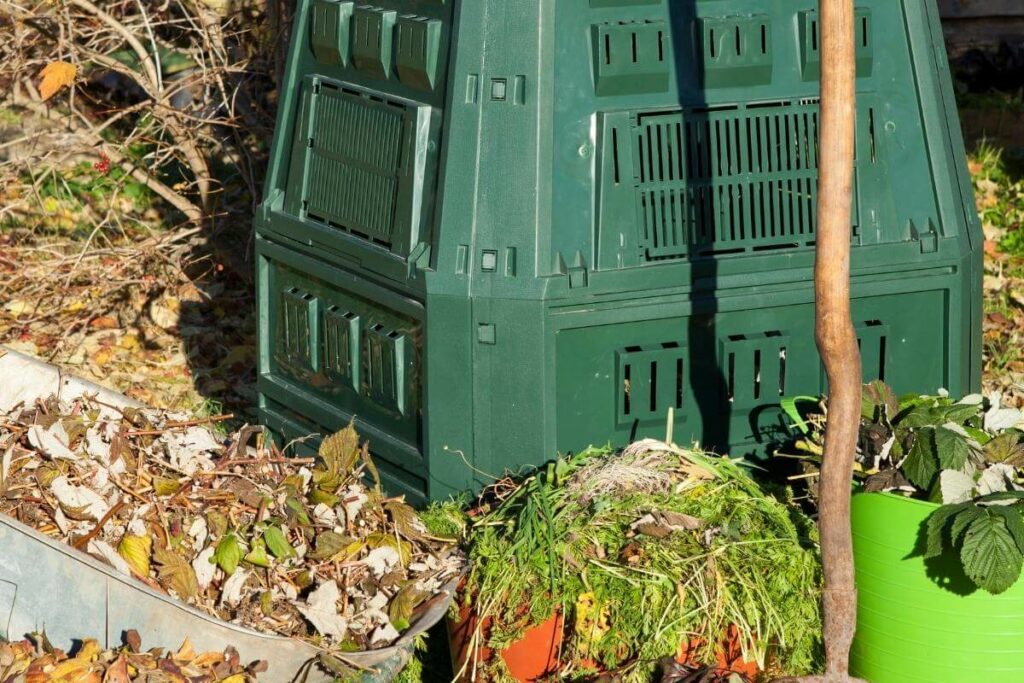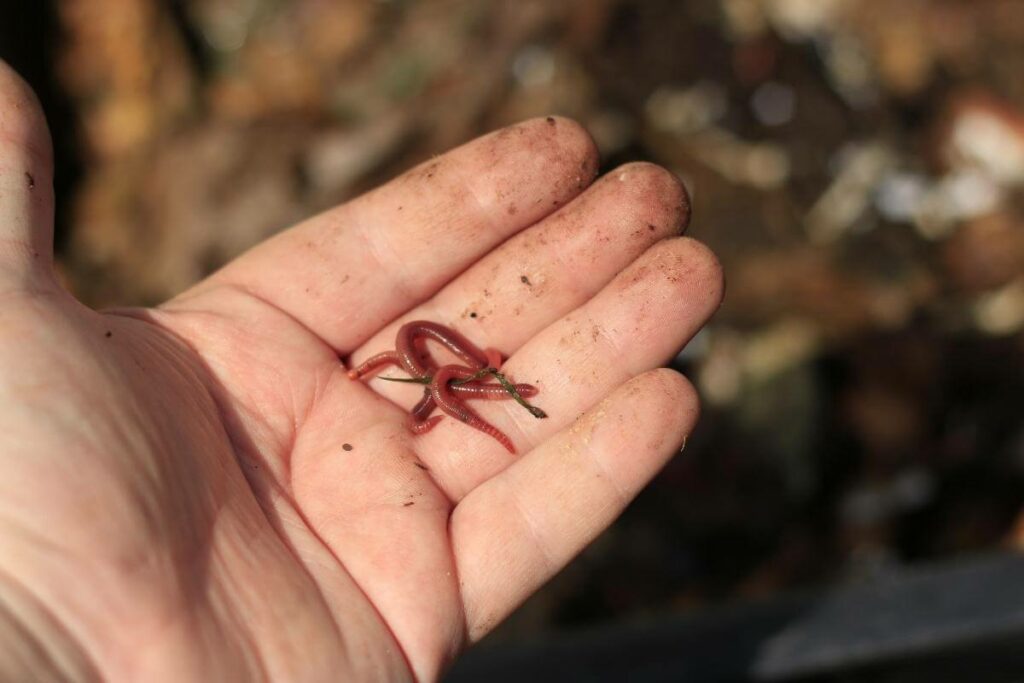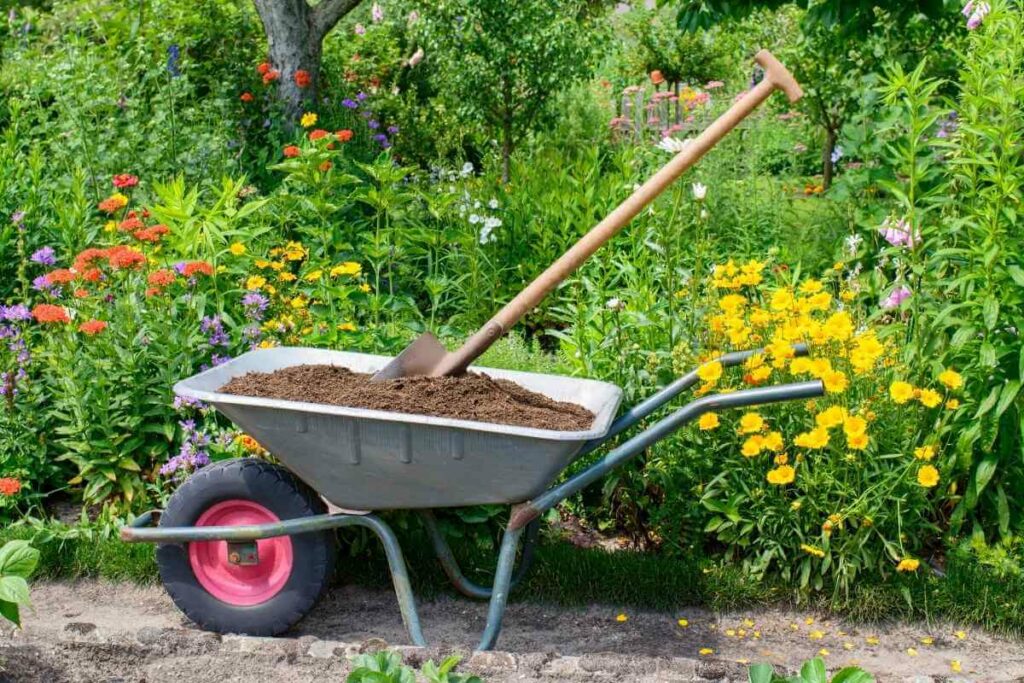Nobody wants stodgy, wet, clumpy compost, and it takes a lot of time to sort and process.
If you are making compost at home, your end goal should be crumbly, rich compost that is packed with nutrients and very crumbly in terms of its texture.
One of the best tricks for ensuring your compost is crumbly is to make sure it has lots of worms in it. Compost is broken down by bacteria, but worms help to move around and distribute the waste. They wriggle through it, eat it, poop in it, and generally improve its texture immensely. If you want crumbly compost, worms are your friends.
How Do I Get Worms In My Compost Pile?
Usually, if you are making compost correctly, worms will come of their own volition, because you are providing a good source of food for them, and creating their natural habitat.

However, if you are having problems getting worms, there are a few things you can do.
Firstly, make sure your compost has the right water balance:
- If your compost is sodden, the worms will drown.
- If your compost is dry, they won’t be able to survive either.
Compost should be wet enough that you get a few drops of moisture out if you squeeze a handful.
Fixing Compost
It’s easy to fix compost that is too dry or too wet.
You can use a hose to lightly sprinkle the compost heap, allowing the water to soak in if it is too dry.
Try adding more wet foods, such as melons or other fruits.
If your compost is too dry, you can tear up scraps of cardboard or paper and toss these in.
They will absorb excess moisture and dry the heap out nicely. Keep an eye on the balance going forward, especially in extreme weather.
Greens to Browns Ratio in Compost
If you are adding the right amount of browns and greens, it should approximately maintain its water balance, so let’s look at that next.
Browns are the carbon ingredients in compost, and greens are the nitrogen ones.
Greens include things like:
- grass clippings
- food waste
- weeds, etc.
They are usually “wet” ingredients and if you have too many, your compost will turn to sludge.
Browns include things like:
- cardboard
- straw
- eggshells
- nutshell
- sticks, etc.
They are usually “dry” ingredients, and if you have too many of these, your compost will dry out and stop composting.
You need a ratio of around 4:1 browns to greens in general, although this is not a fixed rule.
Perfect Conditions for Worms
Next, if your bin gets too compacted, the worms will leave.
That means that every now and then, you should stick a garden fork in and lift and stir the compost around.

Shifting the heap helps to break it up, ensure everything is composting, and add air to compost that might otherwise have little oxygen in it.
You can also keep your bin loose and aerated by adding lots of structured materials.
Sticks and tough stems might take a long time to break down, but they are an invaluable source of air pockets in your compost.
Worms will benefit from this, and will also help with it, because they aerate the heap as they crawl around inside.
As long as your compost is looking healthy and breaking down nicely, you should find that worms live in it.
They may retreat deep into the ground when the weather gets cold, but they will soon return.
Make sure your compost bin stands on bare earth, or you may not be able to attract worms.
What to Avoid: If your bin stands on concrete or another hard surface, try and find somewhere else to put it. It will still work on concrete, but not as efficiently and your compost may be lumpier.
Should I Buy Worms?
Some people do buy worms for their compost heaps, so you can do this if you want to.
However, if your bin stands on earth, the worms will usually find their own way into the compost heap, and you can save yourself some money, plus postage waste.

You can also find worms yourself if you want to, but be aware that compost worms are not earthworms, so just digging a handful of these up will not do.
There are a few different kinds of compost worms, but the commonest kind is called red wiggler. These are thin, red colored worms.
They have many other names, and there are a few different species that often get confused, as they are quite similar to each other.
In general, as long as they are composting worms, they will do the job.
You can’t just dig them up in your yard or local park, however. If you have a friend who composts, you may be able to get some worms from them.
The worms multiple rapidly and will soon fill their food space, so you don’t need to worry about depleting your friend’s compost.
A few handfuls will be plenty, and they will soon have your compost bin alive and wriggling.
From Experience: Ordinary earthworms will not work for your compost bin, and there is no point in adding them. They feed at much lower depths, and therefore they will not wriggle through your pile, making you nice, crumbly compost.
What Else Can I Do?
If your finished product compost is lumpy and hard, try drying it out a bit.

This should help to break it up and make it softer.
You can use a composting screen to turn it back into smaller lumps, or you can use a garden fork to break it down.
Compost should not be lumpy, so if it is, you may find that it isn’t quite ready yet, and needs further processing.
Put it back in the compost heap and give it a little longer for the worms and bacteria to do their jobs.
Conclusion
Crumbly compost is what you are aiming for when gardening, and if you keep the balance in your bin right and have lots of worms, it should be what you get!
If you’re struggling with big lumps, try stirring your compost more regularly, and check you have the right ratios and moisture balance.


